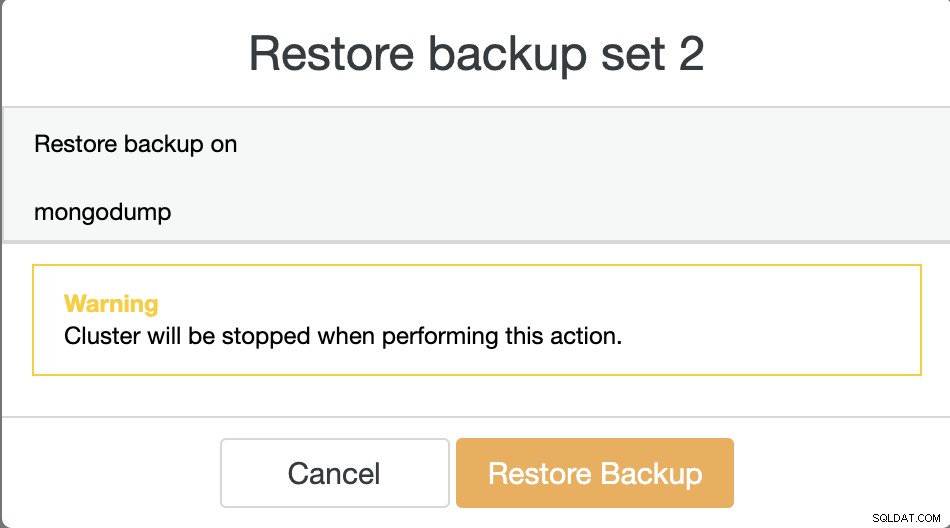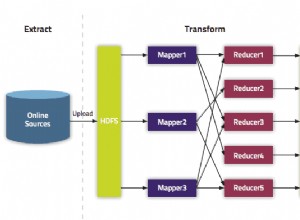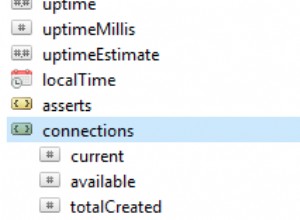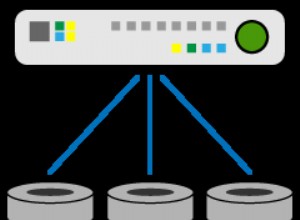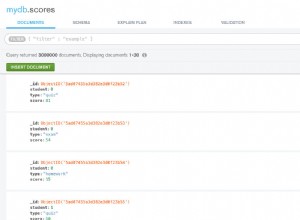Tworzenie kopii zapasowych bazy danych jest jednym z najważniejszych zadań w każdym środowisku produkcyjnym. Jest to proces kopiowania danych w inne miejsce, aby były bezpieczne. Może to być przydatne przy odzyskiwaniu z sytuacji awaryjnych, takich jak uszkodzenie bazy danych lub awaria bazy danych, której nie da się naprawić.
Oprócz odzyskiwania, kopia zapasowa może być również używana do naśladowania produkcyjnej bazy danych do testowania aplikacji w innym środowisku, a nawet do debugowania czegoś, czego nie można zrobić na produkcyjnej bazie danych.
Istnieją różne metody tworzenia kopii zapasowych baz danych, które można wdrożyć, od logicznego tworzenia kopii zapasowych za pomocą narzędzi wbudowanych w bazę danych (np. mysqldump, mongodump, pg_dump) po fizyczne tworzenie kopii zapasowych za pomocą narzędzi innych firm (np. xtrabackup, barman, pgbackrest, spójna kopia zapasowa mongodb).
Która metoda jest używana często zależy od tego, jak chcesz przywrócić. Załóżmy na przykład, że przez pomyłkę upuściłeś tabelę lub kolekcję. Choć może się to wydawać mało prawdopodobne, tak się dzieje. Zatem najszybszym sposobem na odzyskanie byłoby przywrócenie tylko tej tabeli lub kolekcji, zamiast konieczności przywracania całej bazy danych.
Kopia zapasowa i przywracanie w Mongodb
Mongodump i mongorestore to narzędzia do logicznego tworzenia kopii zapasowych używane w MongoDB, jest to rodzaj mysqldump w MySQL lub pg_dump w PostgreSQL. Narzędzie mongodump i mongorestore zostanie dołączone podczas instalacji MongoDB i zrzuci dane w formacie BSON. Mongodump służy do logicznego tworzenia kopii zapasowych bazy danych w plikach zrzutu, podczas gdy mongorestore jest używany do operacji przywracania.
Poleceniamongodump i mongorestore są łatwe w użyciu, chociaż istnieje wiele opcji.
Jak widać poniżej, możesz wykonać kopię zapasową określonych baz danych lub kolekcji. Możesz nawet zrobić migawkę z określonego punktu w czasie, dołączając oplog.
[email protected]:~# mongodump --help
Usage:
mongodump <options>
Export the content of a running server into .bson files.
Specify a database with -d and a collection with -c to only dump that database or collection.
See http://docs.mongodb.org/manual/reference/program/mongodump/ for more information.
general options:
--help print usage
--version print the tool version and exit
verbosity options:
-v, --verbose=<level> more detailed log output (include multiple times for more verbosity, e.g. -vvvvv, or specify a numeric value, e.g. --verbose=N)
--quiet hide all log output
connection options:
-h, --host=<hostname> mongodb host to connect to (setname/host1,host2 for replica sets)
--port=<port> server port (can also use --host hostname:port)
kerberos options:
--gssapiServiceName=<service-name> service name to use when authenticating using GSSAPI/Kerberos ('mongodb' by default)
--gssapiHostName=<host-name> hostname to use when authenticating using GSSAPI/Kerberos (remote server's address by default)
ssl options:
--ssl connect to a mongod or mongos that has ssl enabled
--sslCAFile=<filename> the .pem file containing the root certificate chain from the certificate authority
--sslPEMKeyFile=<filename> the .pem file containing the certificate and key
--sslPEMKeyPassword=<password> the password to decrypt the sslPEMKeyFile, if necessary
--sslCRLFile=<filename> the .pem file containing the certificate revocation list
--sslAllowInvalidCertificates bypass the validation for server certificates
--sslAllowInvalidHostnames bypass the validation for server name
--sslFIPSMode use FIPS mode of the installed openssl library
authentication options:
-u, --username=<username> username for authentication
-p, --password=<password> password for authentication
--authenticationDatabase=<database-name> database that holds the user's credentials
--authenticationMechanism=<mechanism> authentication mechanism to use
namespace options:
-d, --db=<database-name> database to use
-c, --collection=<collection-name> collection to use
uri options:
--uri=mongodb-uri mongodb uri connection string
query options:
-q, --query= query filter, as a JSON string, e.g., '{x:{$gt:1}}'
--queryFile= path to a file containing a query filter (JSON)
--readPreference=<string>|<json> specify either a preference name or a preference json object
--forceTableScan force a table scan
output options:
-o, --out=<directory-path> output directory, or '-' for stdout (defaults to 'dump')
--gzip compress archive our collection output with Gzip
--repair try to recover documents from damaged data files (not supported by all storage engines)
--oplog use oplog for taking a point-in-time snapshot
--archive=<file-path> dump as an archive to the specified path. If flag is specified without a value, archive is written to stdout
--dumpDbUsersAndRoles dump user and role definitions for the specified database
--excludeCollection=<collection-name> collection to exclude from the dump (may be specified multiple times to exclude additional collections)
--excludeCollectionsWithPrefix=<collection-prefix> exclude all collections from the dump that have the given prefix (may be specified multiple times to exclude additional prefixes)
-j, --numParallelCollections= number of collections to dump in parallel (4 by default) (default: 4)
--viewsAsCollections dump views as normal collections with their produced data, omitting standard collectionsW poleceniu mongorestore jest wiele opcji, opcja obowiązkowa jest związana z opcjami połączenia, takimi jak host, port i uwierzytelnianie. Istnieją inne parametry, takie jak -j używane do równoległego przywracania kolekcji, -c lub --collection jest używane do określonej kolekcji, a -d lub --db służy do definiowania określonej bazy danych. Listę opcji parametru mongorestore można wyświetlić za pomocą pomocy:
[email protected]:~# mongorestore --help
Usage:
mongorestore <options> <directory or file to restore>
Restore backups generated with mongodump to a running server.
Specify a database with -d to restore a single database from the target directory,
or use -d and -c to restore a single collection from a single .bson file.
See http://docs.mongodb.org/manual/reference/program/mongorestore/ for more information.
general options:
--help print usage
--version print the tool version and exit
verbosity options:
-v, --verbose=<level> more detailed log output (include multiple times for more verbosity, e.g. -vvvvv, or specify a numeric value, e.g. --verbose=N)
--quiet hide all log output
connection options:
-h, --host=<hostname> mongodb host to connect to (setname/host1,host2 for replica sets)
--port=<port> server port (can also use --host hostname:port)
kerberos options:
--gssapiServiceName=<service-name> service name to use when authenticating using GSSAPI/Kerberos ('mongodb' by default)
--gssapiHostName=<host-name> hostname to use when authenticating using GSSAPI/Kerberos (remote server's address by default)
ssl options:
--ssl connect to a mongod or mongos that has ssl enabled
--sslCAFile=<filename> the .pem file containing the root certificate chain from the certificate authority
--sslPEMKeyFile=<filename> the .pem file containing the certificate and key
--sslPEMKeyPassword=<password> the password to decrypt the sslPEMKeyFile, if necessary
--sslCRLFile=<filename> the .pem file containing the certificate revocation list
--sslAllowInvalidCertificates bypass the validation for server certificates
--sslAllowInvalidHostnames bypass the validation for server name
--sslFIPSMode use FIPS mode of the installed openssl library
authentication options:
-u, --username=<username> username for authentication
-p, --password=<password> password for authentication
--authenticationDatabase=<database-name> database that holds the user's credentials
--authenticationMechanism=<mechanism> authentication mechanism to use
uri options:
--uri=mongodb-uri mongodb uri connection string
namespace options:
-d, --db=<database-name> database to use when restoring from a BSON file
-c, --collection=<collection-name> collection to use when restoring from a BSON file
--excludeCollection=<collection-name> DEPRECATED; collection to skip over during restore (may be specified multiple times to exclude additional collections)
--excludeCollectionsWithPrefix=<collection-prefix> DEPRECATED; collections to skip over during restore that have the given prefix (may be specified multiple times to exclude additional prefixes)
--nsExclude=<namespace-pattern> exclude matching namespaces
--nsInclude=<namespace-pattern> include matching namespaces
--nsFrom=<namespace-pattern> rename matching namespaces, must have matching nsTo
--nsTo=<namespace-pattern> rename matched namespaces, must have matching nsFrom
input options:
--objcheck validate all objects before inserting
--oplogReplay replay oplog for point-in-time restore
--oplogLimit=<seconds>[:ordinal] only include oplog entries before the provided Timestamp
--oplogFile=<filename> oplog file to use for replay of oplog
--archive=<filename> restore dump from the specified archive file. If flag is specified without a value, archive is read from stdin
--restoreDbUsersAndRoles restore user and role definitions for the given database
--dir=<directory-name> input directory, use '-' for stdin
--gzip decompress gzipped input
restore options:
--drop drop each collection before import
--dryRun view summary without importing anything. recommended with verbosity
--writeConcern=<write-concern> write concern options e.g. --writeConcern majority, --writeConcern '{w: 3, wtimeout: 500, fsync: true, j: true}'
--noIndexRestore don't restore indexes
--noOptionsRestore don't restore collection options
--keepIndexVersion don't update index version
--maintainInsertionOrder preserve order of documents during restoration
-j, --numParallelCollections= number of collections to restore in parallel (4 by default) (default: 4)
--numInsertionWorkersPerCollection= number of insert operations to run concurrently per collection (1 by default) (default: 1)
--stopOnError stop restoring if an error is encountered on insert (off by default)
--bypassDocumentValidation bypass document validation
--preserveUUID preserve original collection UUIDs (off by default, requires drop)Przywracanie określonych kolekcji w MongoDB można wykonać za pomocą kolekcji parametrów w mongorestore. Załóżmy, że masz bazę danych zamówień, wewnątrz bazy danych zamówień znajduje się kilka kolekcji, jak pokazano poniżej:
my_mongodb_0:PRIMARY> show dbs;
admin 0.000GB
config 0.000GB
local 0.000GB
orders 0.000GB
my_mongodb_0:PRIMARY> use orders;
my_mongodb_0:PRIMARY> show collections;
order_details
orders
stockZaplanowaliśmy już kopię zapasową bazy danych zamówień i chcemy przywrócić kolekcję magazynową do nowej bazy danych order_new na tym samym serwerze. Jeśli chcesz użyć opcji --collection, musisz przekazać nazwę kolekcji jako parametr mongorestore lub możesz użyć opcji --nsInclude={db}.{collection}, jeśli nie określiłeś ścieżki do pliku kolekcji .
[email protected]:~/dump/orders# mongorestore -umongoadmin --authenticationDatabase admin --db order_new --collection stock /root/dump/orders/stock.bson
Enter password:
2020-03-09T04:06:29.100+0000 checking for collection data in /root/dump/orders/stock.bson
2020-03-09T04:06:29.110+0000 reading metadata for order_new.stock from /root/dump/orders/stock.metadata.json
2020-03-09T04:06:29.134+0000 restoring order_new.stock from /root/dump/orders/stock.bson
2020-03-09T04:06:29.202+0000 no indexes to restore
2020-03-09T04:06:29.203+0000 finished restoring order_new.stock (1 document)
2020-03-09T04:06:29.203+0000 doneMożesz sprawdzić kolekcję w bazie danych order_new, jak pokazano poniżej:
my_mongodb_0:PRIMARY> use order_new;
switched to db order_new
my_mongodb_0:PRIMARY> show collections;
stockJak możemy przywrócić za pomocą mongodump w ClusterControl
Przywracanie zrzutu kopii zapasowej za pomocą ClusterControl jest łatwe, wystarczą tylko 2 kroki, aby przywrócić kopię zapasową. Na liście będzie wiele plików kopii zapasowych, jeśli włączysz harmonogram tworzenia kopii zapasowych, są pewne informacje o kopiach zapasowych, które mogą być bardzo przydatne. Na przykład stan kopii zapasowej, który wskazuje, czy tworzenie kopii zapasowej zostało ukończone / nie powiodło się, metoda tworzenia kopii zapasowej, lista baz danych i rozmiar zrzutu. Kroki przywracania danych MongoDB za pomocą ClusterControl są następujące:
Krok pierwszy
Postępuj zgodnie z instrukcjami, aby przywrócić kopię zapasową do węzła, jak pokazano poniżej...
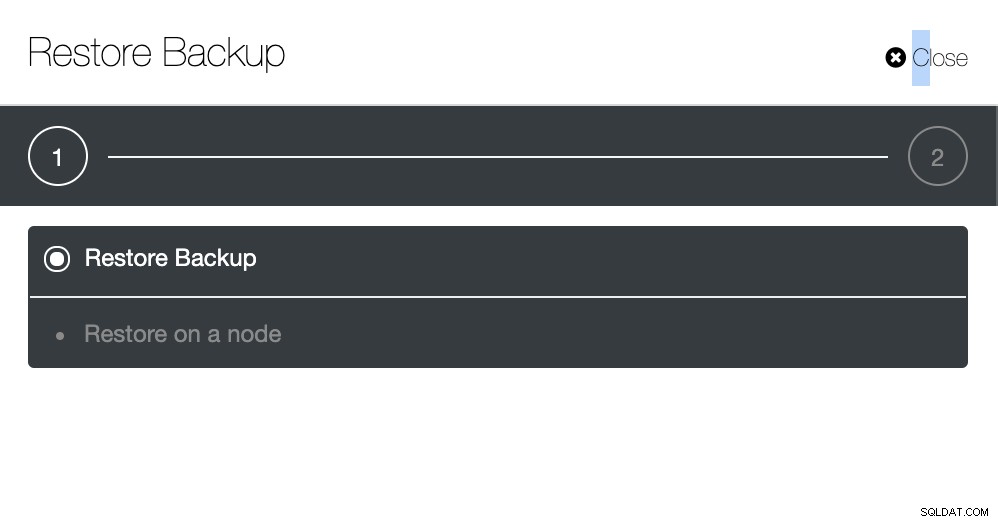
Krok drugi
Musisz wybrać kopię zapasową do przywrócenia.
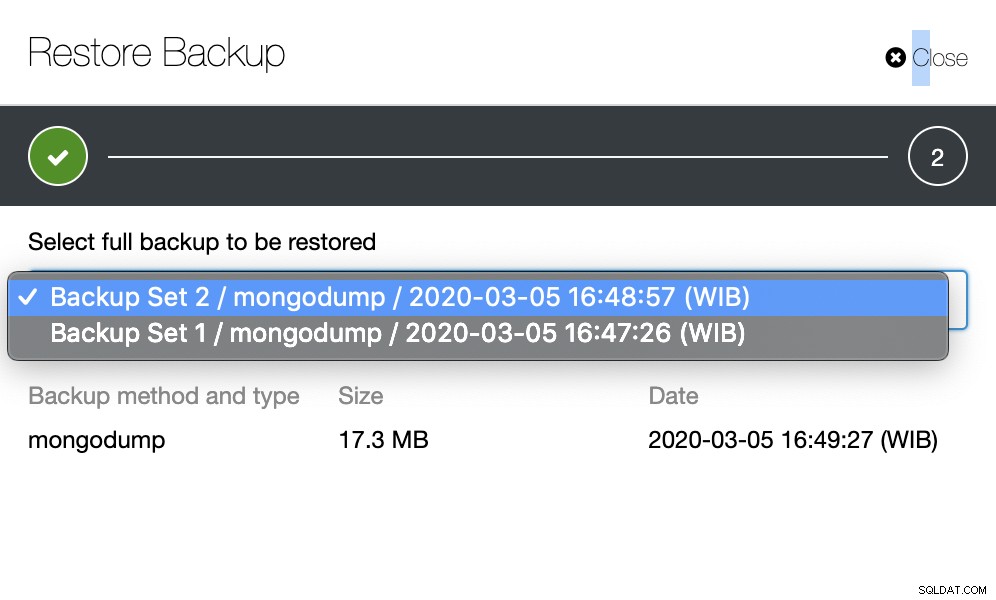
Krok trzeci
Przejrzyj podsumowanie...
